I could go on and on about the mystery and intrigue of Easter Island, but I think I beat the topic to death in Part I of this report. People tend to visit Easter Island for one solitary reason: to see the Moai. There is a lot of mystery about these statues, indigenous to Easter Island and left there by the native Rapa Nui people, ancestors of whom still populate the island today. There is a lot of mythology about the statues and there are numerous people who have dedicated their lives and livelihood to researching and discovering the untold secrets of these incredible statues. I am not one of them, but that’s ok. I didn’t come to understand everything about the Moai on this trip, I just wanted to live in their world for a bit and experience the culture of what, if not for the daily LAN flights, could accurately be called the Land of the Lost.
I’ll try to fill in the blanks where I can, but I like exploring on my own and didn’t take a tour, so I no doubt missed out on a lot of details about the Moai. There are plenty of resources online that do a much better job than I ever could. One of the most recommended books I came across is A Companion to Easter Island, by James Grant-Peterkin, a British native who visited the island to study its unique linguistics (a blend of Spanish and Rapa Nui) and fell in love. His website, and more information about the book, can be found at http://www.easterislandspirit.com/. His company also offers tours, and I’m sure they’re a wonderful value, but I decided to try it on my own this time.
Coach, Coach, Coach, Coach, Coach, Coach, Coach
The Statues, The Moai
Mainly More Pictures of Easter Island
Easter Island is unique. Not just for the statues and whatnot, but in how tourism is handled. Tourism is 100% of the economy, and they have it down pretty well. Normally my process for planning a trip involves lots of time on Flyertalk, Tripadvisor, and a bunch of travel blogs looking for recommendations. I indeed found lots of recommendations, but there were a few that stuck out to me, with a common theme: “don’t book anything in advance, just show up at the airport and there will be people there with rooms available. Negotiate with them, they’re just as good as anything you’ll find on the internet.” That sounded very awesome to me, so it’s exactly what I did.
Most of Easter Island consists of Rapa Nui National Park, which you need to buy a ticket to “enter” (my ticket was checked at precisely one location on the entire island). The absolute best place to purchase this ticket is right after you get off the airplane. You can’t miss the booth, you’ll see the line.
Tickets cost a lovely $60USD for foreigners or just $10USD if you’re Chilean. I did my best Chilean impression (“Is it Chile in here or is it just me…amiright?“) after which I paid the foreigner price of $60 and dejectedly walked away. After the ticket booth you walk into the arrival hall which features a new luggage belt (I’ve read that previously they just stacked all the luggage in the arrival hall) and grabbed my bag. I briefly thought about why I wasn’t seeing any customs officials before I remembered that this is in fact part of Chile so it was a domestic flight from Santiago, therefore no customs.
Bag in hand, I headed away from the luggage belt and, sure enough, there were about 10 stalls that were about half full of people peddling their rooms. I walked past uninterestingly, you know, scoping the situation out, before approaching Oscar, who had an enormous smile on his face and looked like he was Island Cool, he had that relaxed air about him. I asked him about what he had available, and he told me pricing for dormitorio style and for una habitacion. Dormitorio (Spanish for “dormitory-o”) I assume were bunks in a bigger room with a shared bathroom. Hoping to avoid sharing a bathroom, I decided to splurge and spring for the habitacion. It was my own private little villa off the main house. Private bathroom, wifi, and two beds, and I’m in. I asked Oscar, in Spanish, how much for the habitacion? “30,000 pesos cada noche” he replied (30,000 pesos each night). At this moment, I realized something very embarrassing/hilarious…
I had traveled all the way to Easter Island with no idea what the exchange rate was from Chilean Peso to US Dollar.
I was sure I had checked it at some point, but for the life of me couldn’t remember what it was. Figuring asking Oscar about it wouldn’t help my negotiations, I played it Island Cool and casually replied that I was hoping more for 22,000 pesos. He replied he could do 27,000 and I started to walk away, after which we settled on 25,000 pesos/night for two nights.
So, quick recap: I just agreed to pay 50,000 of something for lodging with no idea how it converted to dollars. One of the dumbest travel moments I’ve had in quite a while.
Oscar took me and a lovely British girl who was staying in the dormitory on a quick tour of town. We found out he is Rapa Nui and has lived there his whole life. He was incredibly nice and laid back as we drove through town, which took all of 10 minutes or so, only because we got caught in a traffic jam (3 cars deep at a stop sign).
My villa was very spartanly appointed, as is most accommodation on the island. Air conditioning is unheard of, but Oscar had a very nice oscillating fan for me. There was wifi that worked intermittently at a fair speed, so no complaints. Oscar cooked a good breakfast as well.
After I got my things settled, I met up with Oscar to complete my registration, which included getting the keys to the room and writing my name in his guestbook. He then asked if I was going to rent a car, which I was planning on doing. He whipped out a map of the island, hit play in his head, and showed me where to go and where not to go.
Just like that I set off towards the main street of Hanga Roa, the town center of which was about a 15 minute walk away from Oscar’s place. Oscar recommended a company called Insular for car rental, as they had the best prices. “Tell them I sent you and they’ll give you a special price,” he said, “a special price” almost assuredly meaning “I get a commission”. But that was ok with me I guess. There are no big-name international rental chains on Easter Island. You have four companies to choose from, all who rent pretty much the same kind of cars. Insular was not only the place Oscar recommended but also the closest to his place. I walked in and was immediately helped by one of the most beautiful girls I’d ever seen. Which is not great for negotiating a lower rate for ol’ Andy.
I’m a former car salesman, which means I’m comfortable negotiating and actually enjoy it most of the time. I told Beautiful Girl that I wanted to rent a car for the rest of that day and all of the next day. She said, beautifully, the special price for two full days (despite it already being 1:45pm) was 40,000 pesos/day. I had my chance. I said “40,000 pesos a day? Come on! In dollars that’s like…like…” and she finished my sentence for me with the amount in dollars. I finally knew the exchange rate. So my negotiating skills turned up to 11 and we ended up settling on…well…70,000 pesos total. For the car with part of the passenger side door missing. Not my best negotiating efforts I’ll admit, but based on comments I heard from other tourists I didn’t do worse than many and did better than most, so not a bad deal I guess.
(a quick aside, back to the habitacion pricing situation…You’ll be happy to know that I wasn’t actually ripped off and paid an EXTREMELY good rate. An easy conversion guide from Peso to Dollar is to multiply by 2 and drop 3 zeroes. While not exact, it’s pretty close and easy to remember. My two nights (totaling 50,000 pesos) ended up being just shy of $100USD total, which was an incredible rate compared to what I found on the internet.)
There is no concept of rental insurance on Easter Island. Make a note and take pictures/video of the car before you take possession of it. There were quite a few things to make note of on my car, and I could tell the girl was getting annoyed at how many things I pointed out (being a former car salesman I’ve had to carefully look over hundreds of cars that were being traded in), but the A/C blew cold and it even had most of the padding still on the steering wheel. I climbed into the saddle, gave it a go, and immediately stalled out (it takes me a few minutes to get used to driving a manual transmission). I confidently smiled at some people who were laughing at me, got the car in gear, and clown-carishly set off for the rest of the island.
I set off towards the east, past the airport, then made my way to the road that hugged the coast. And then I saw it. My first glimpse of a Moai. Like I would probably 30-40 times that day, I pulled over, grabbed my camera, and snapped away.
Pretty much every Moai site is named, but I forgot most of them, and that’s ok because at this point you’re probably just looking at the pictures anyway.
It was a sunny day with a nice island breeze, so I kept driving with the windows down, stopping when I wanted to take a closer look at something.
The first few Moai sites that I came to had the Moai lying face-down on the ground. These statues represented the native people’s deity, and recent scholarship posits that as the islanders, who had stripped the island of most of its vegetation, were so ashamed of the condition of the island (there are rumors of cannabalism) that they couldn’t bear to have their gods looking at them (contrary to popular perception, almost all Moai faced inland), so they were respectfully laid down off their platforms (the platforms are called ahu). This could be right or wrong, but it adds to the mystery of the island.
I kept going in my trusty little Suzuki.
I’ll stop right here and say something before going to the rest of the pictures. When you come, and you should, do not touch the Moai. Have some respect. I saw a group of tourists touching them and rightfully laid into them. These things are incredibly fragile and have deep emotional and spiritual meaning to the Rapa Nui people. Respect where you are and leave them to rest in peace.
I continued along the coastal road and was impressed at the volcanic scenery.
I made my way northeast, almost to Ahu Tongariki (which is the big line of Moai you’ve probably seen in pictures before), when I saw a sign for Rano Raraku in front of a big volcano off the main road by a kilometer or so. I checked my map that Oscar made, saw a lot of arrows and exclamation marks around Rano Raraku, so I turned left, drove up the winding road, and parked in the car park, near a lot of tourist buses (a sign I had come to the right place).
Rano Raraku is a volcano and World Heritage Site where there is the quarry from which 95% of Moai on the island were carved. There are 378 Moai scattered around the park in various states of repair and/or disrepair. You can get up close to the statues, some of which are buried up to their neck, others with their bodies displayed. The largest Moai at the park is over 70 feet tall! As you walk the trails you’ll see a bunch of statues and you’ll see even more as you look up the sides of the volcano. It’s simply a place like none other in the entire world. One of the best parts of the park is seeing the quarry where partially finished Moai still lay! Some people say that these unfinished Moai were in the act of being carved when the sculptor encountered a hard deposit of rock that they couldn’t get through, so they moved on to softer rock. Others say that these were intended to be sculptures around the volcano and were never meant to be freestanding Moai.
They’re literally all over the place!
I stopped and lingered at the quarry.
Just past the quarry is a Moai called Tukuturi, who is markedly different than the others, he appears to be kneeling and is made of a different kind of rock than the others in the area. Some scholars believe this to be one of the last Moai made. In the background you can see Ahu Tongariki.
I stayed at Rano Raraku for a few hours. The different expressions the Moai wore were fascinating. I didn’t want to leave, as your ticket allows you only one entry, but saw everything that I wanted to see, so I started to make my way back toward the park entrance, but not before grabbing a pic of someone I know everyone wanted to see.
The path back towards the car park was a great vista of the distant hills, complimented by two lovebirds holding hands as they strolled down the path.
I’m so glad that I got to visit Rano Raraku. I stopped by the cafe next to the car park to get some bottled water then made for the Suzuki (which I named Guillermo) and Ahu Tongariki. The Moai here have been set back atop the ceremonial platform (again, called an ahu) and are probably what you’ve seen of Easter Island before.
I took many hundreds of pictures here, but the best were from sunrise the following morning, where it was just me, the fifteen Moai, and about 300 other tourists taking pictures of the exact same thing. So you’ll see more of Ahu Tongariki in the next post, which will also feature white sand beaches, power outages, and a great story of me almost being hit on the street…but not by a car.
Hope you’re enjoying this one so far, happy to answer any questions in the comments!

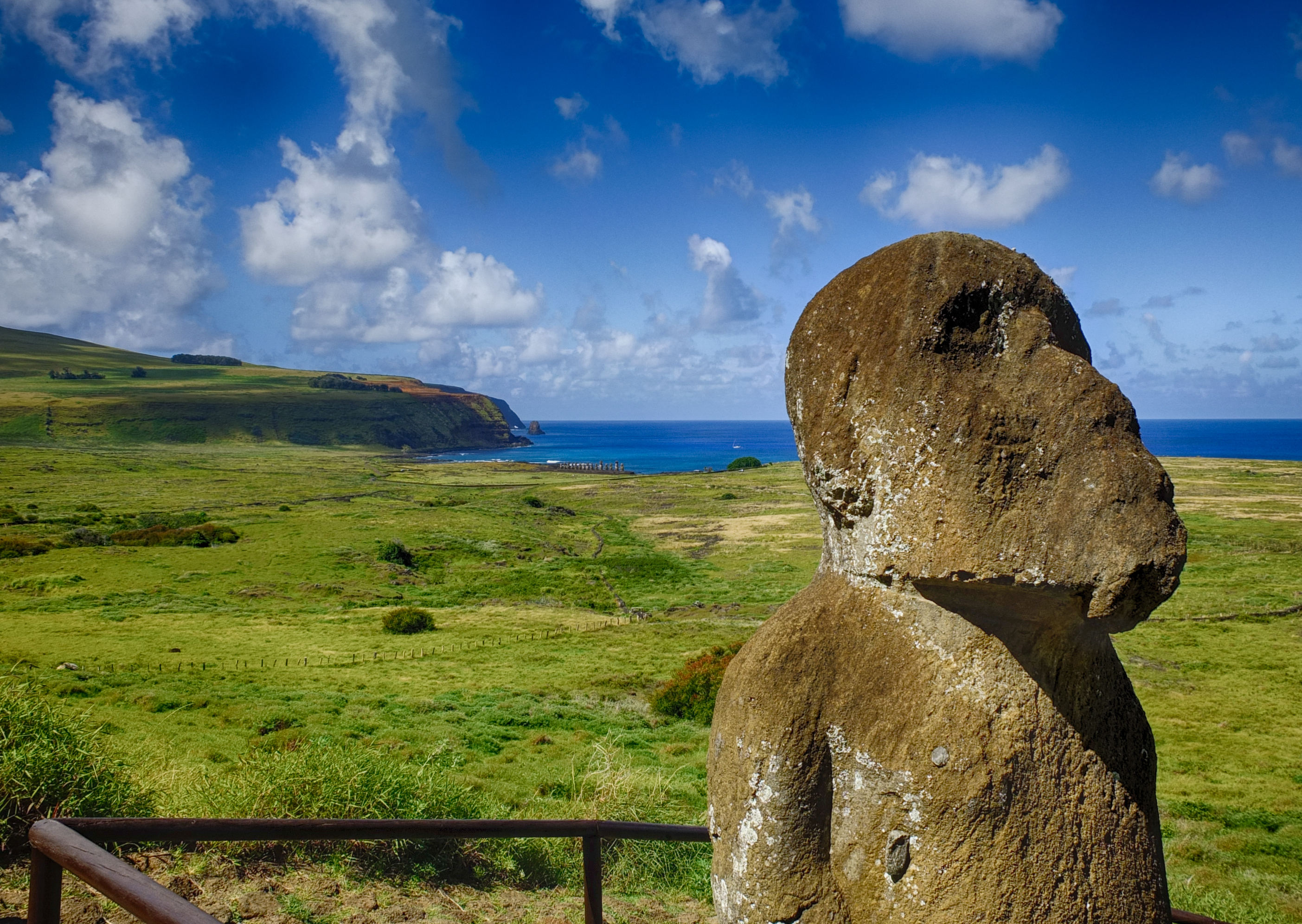
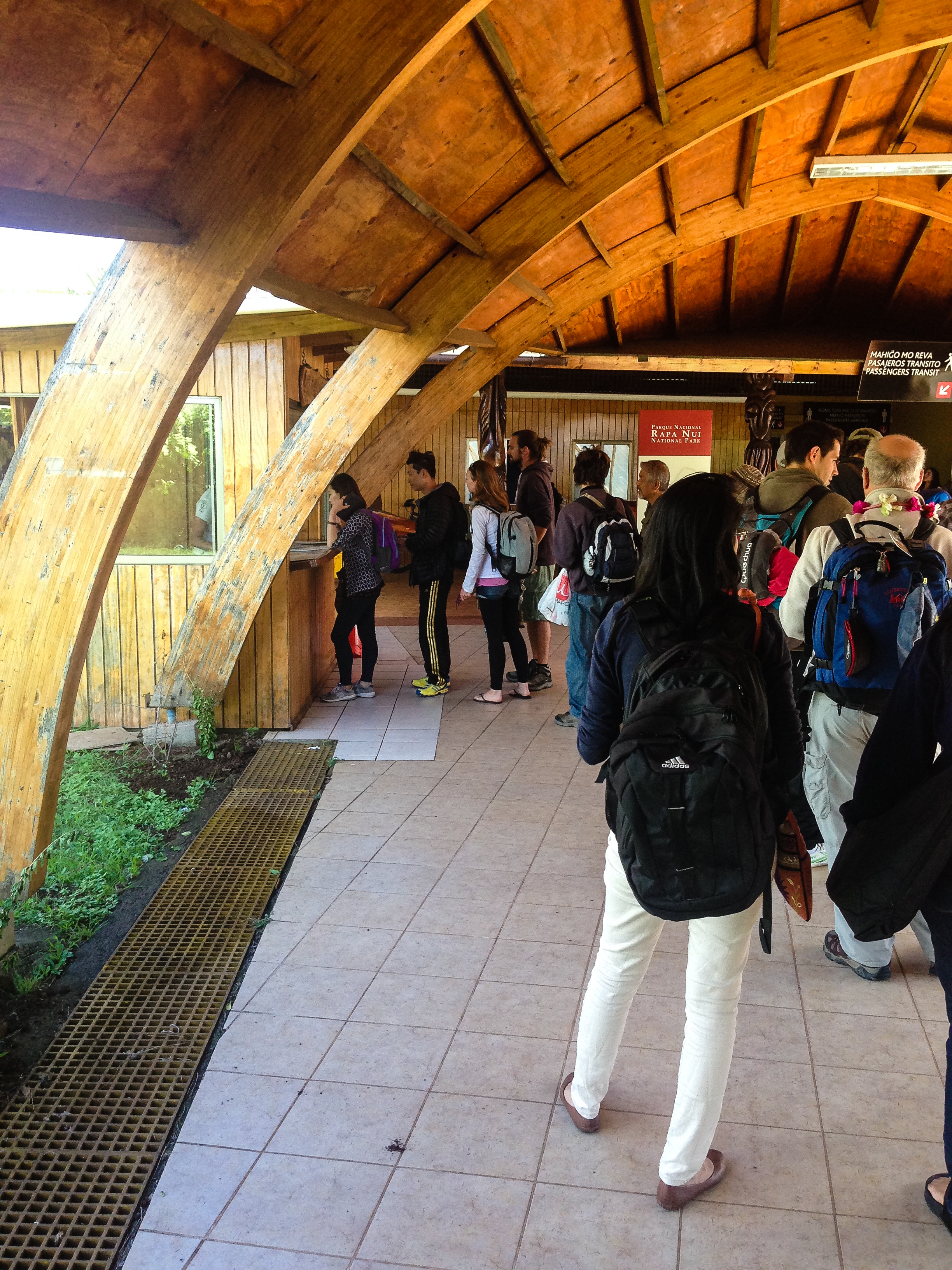
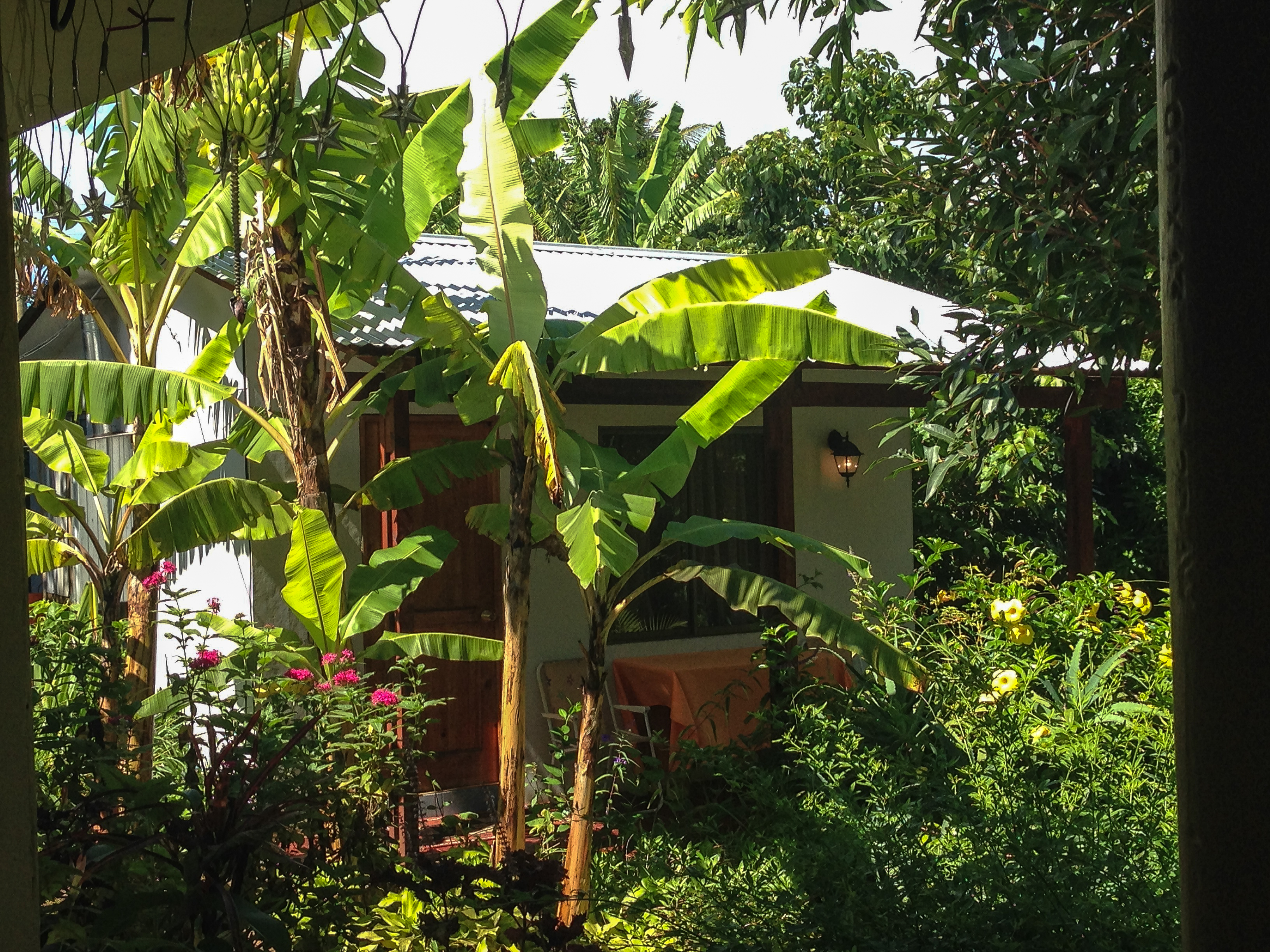
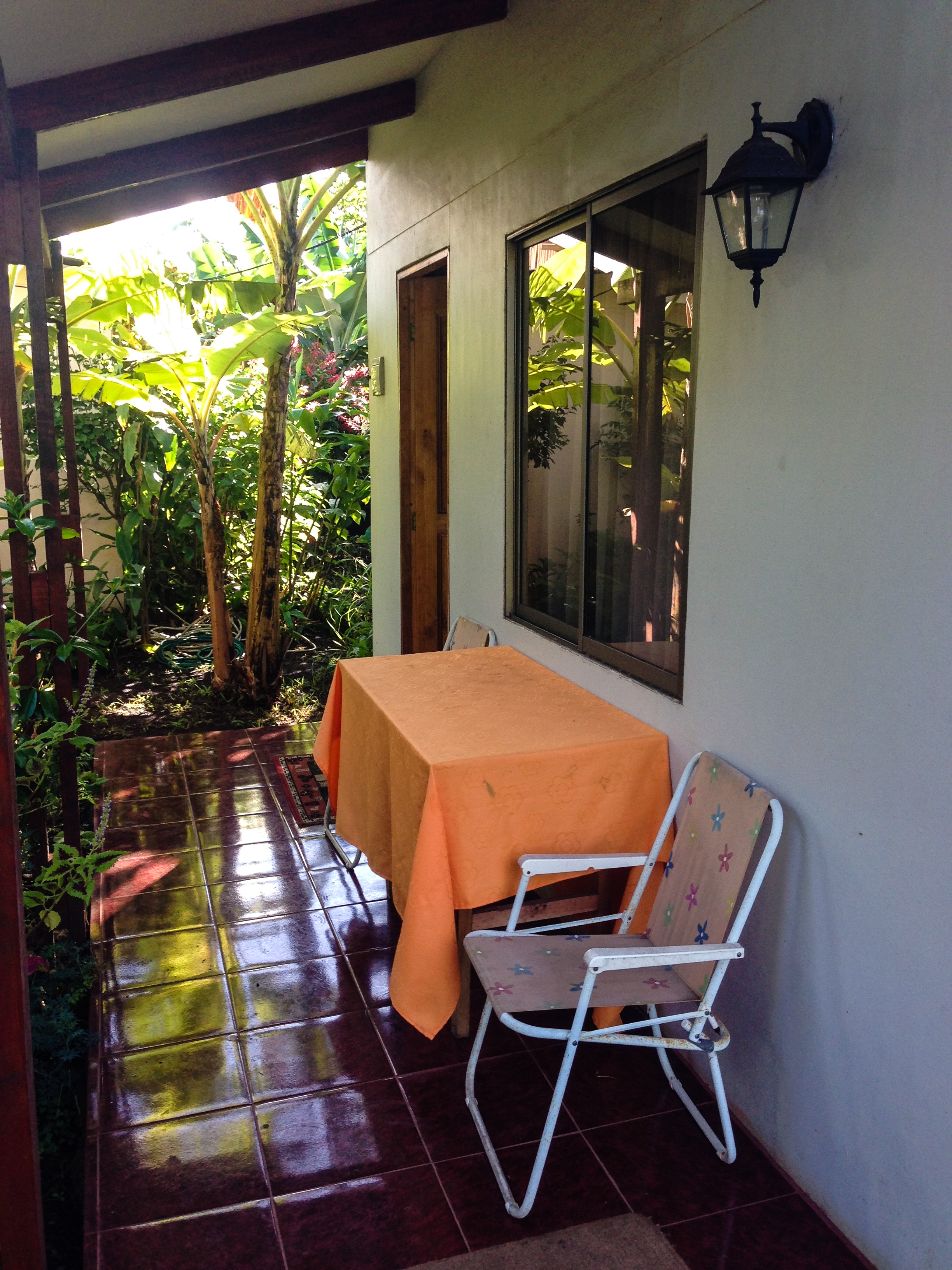

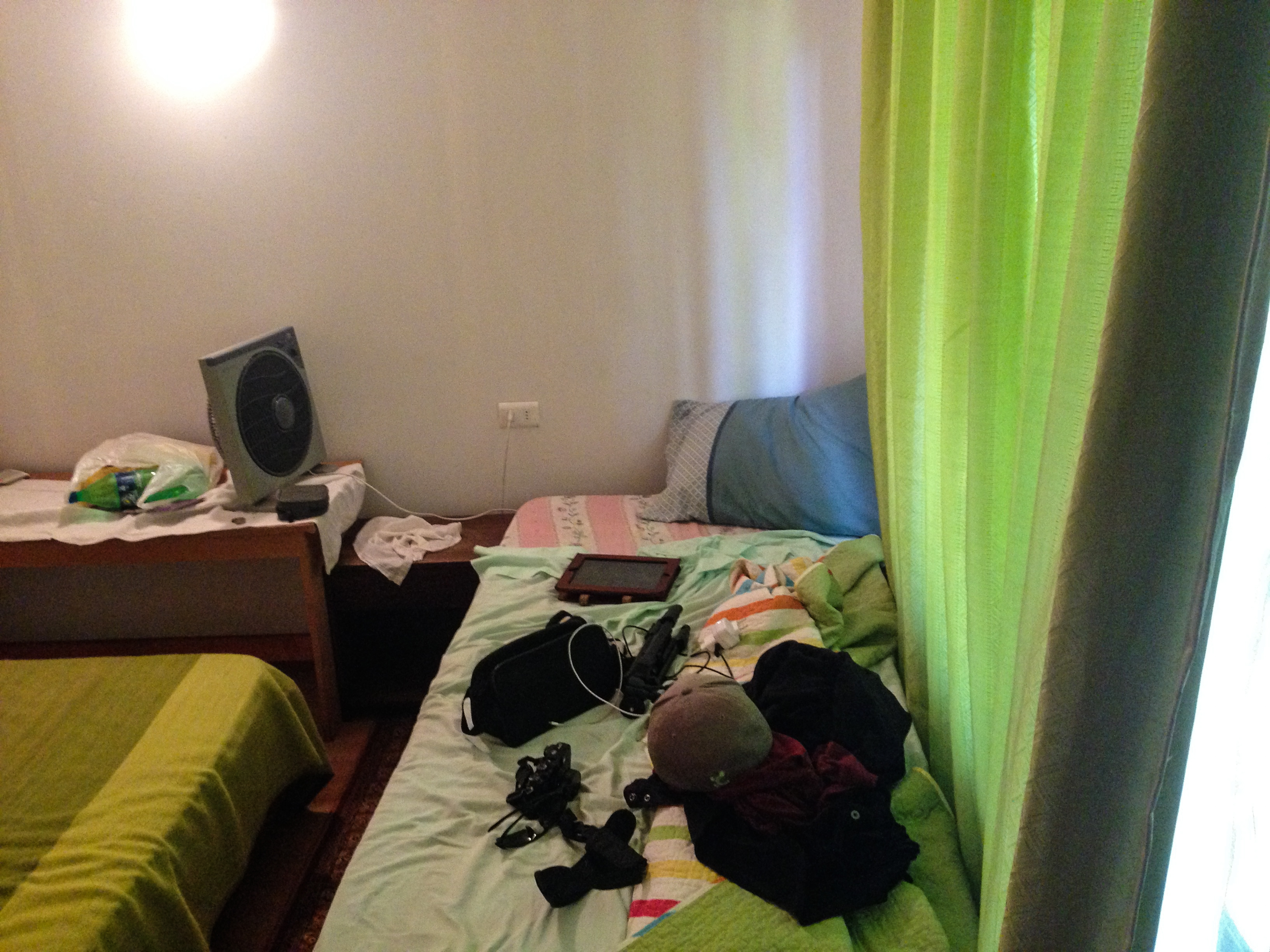
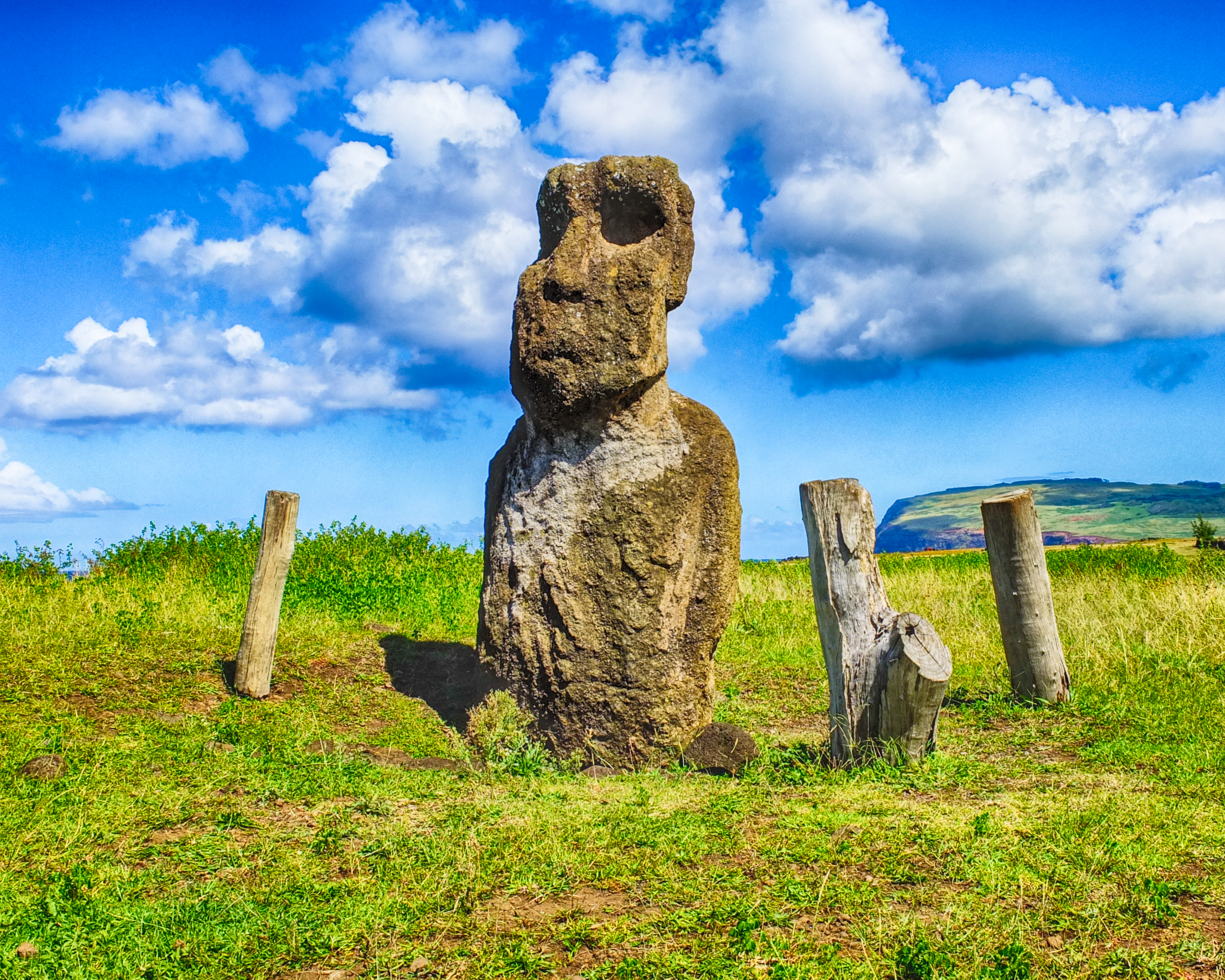

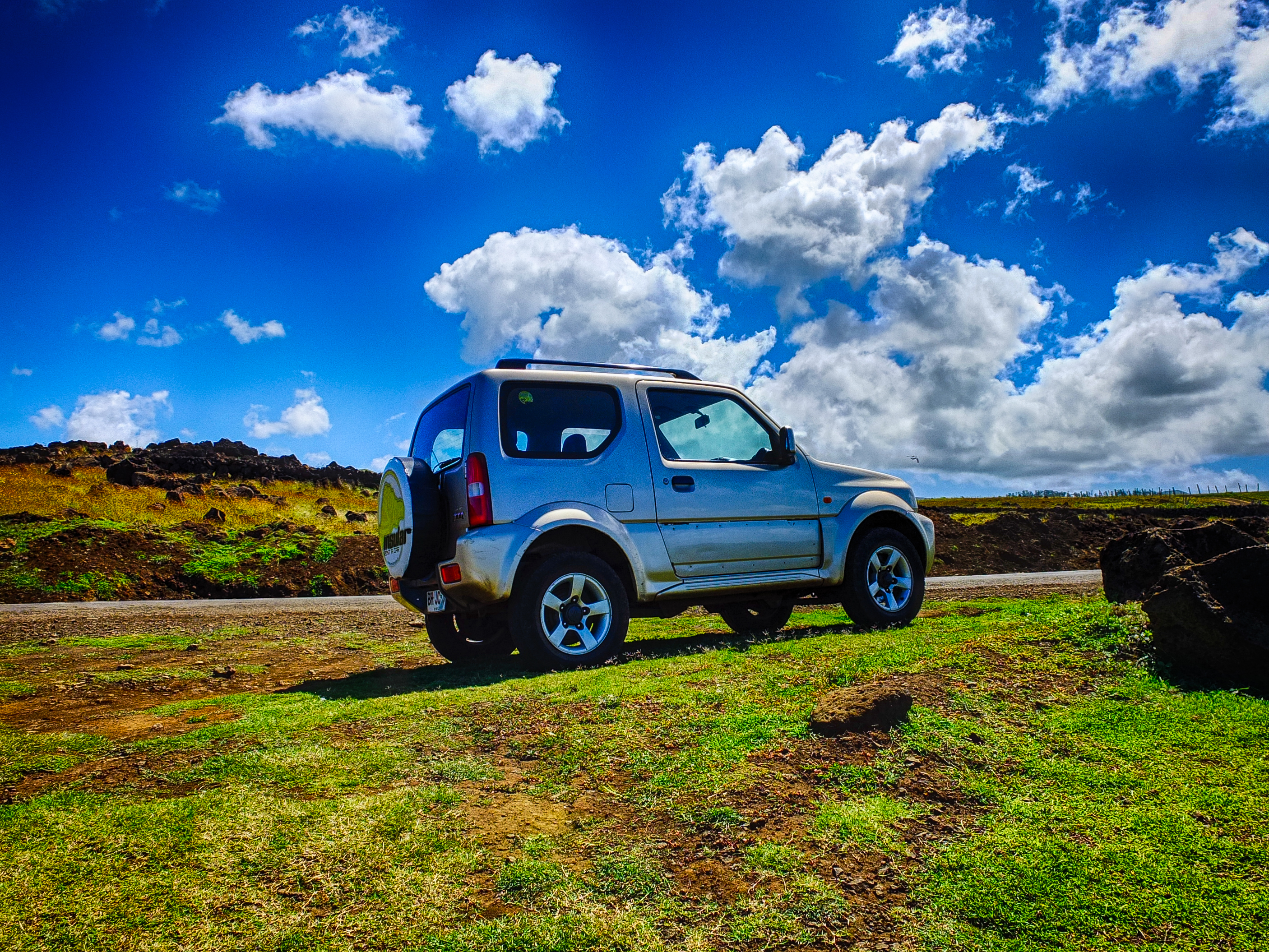

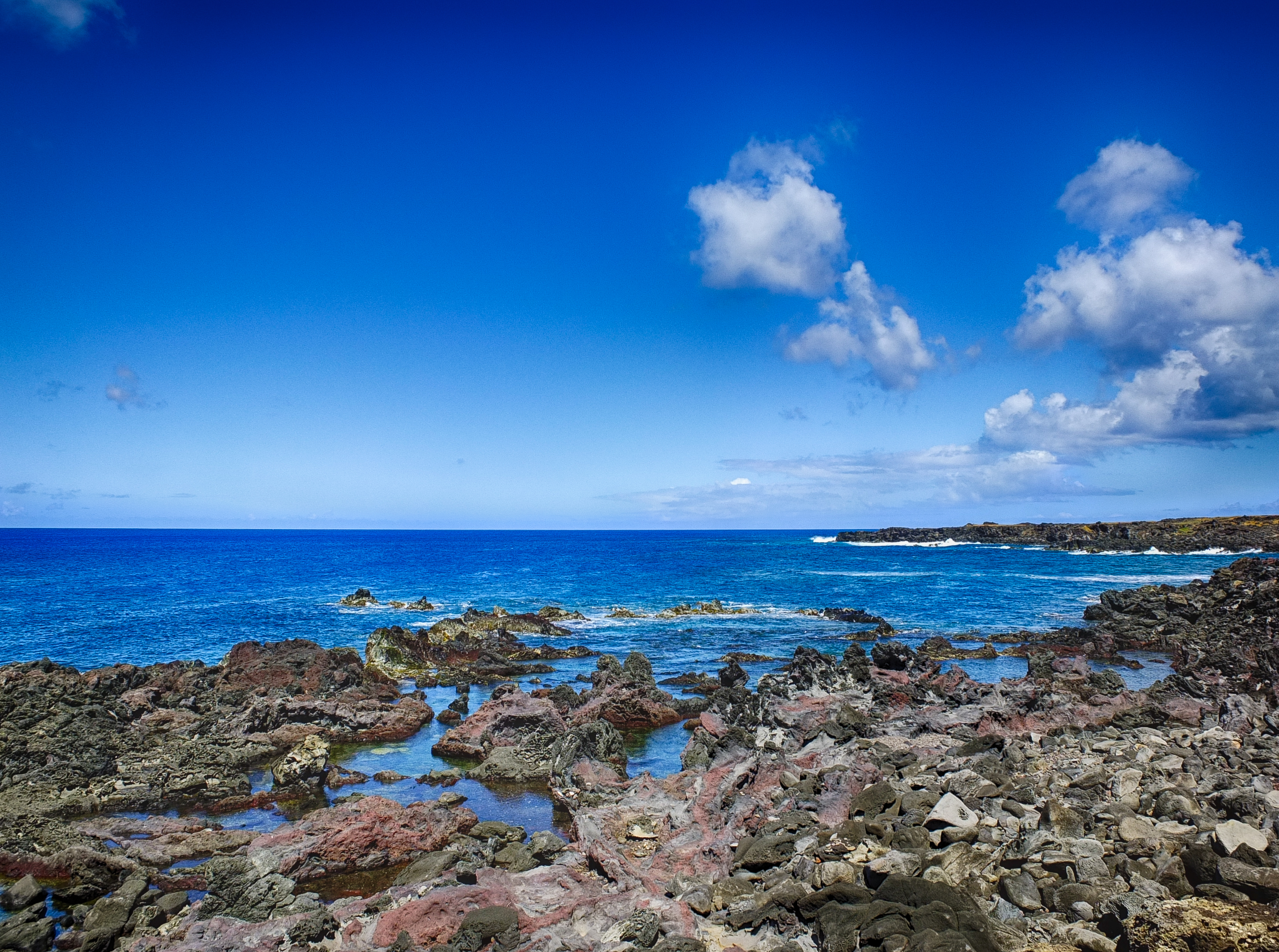
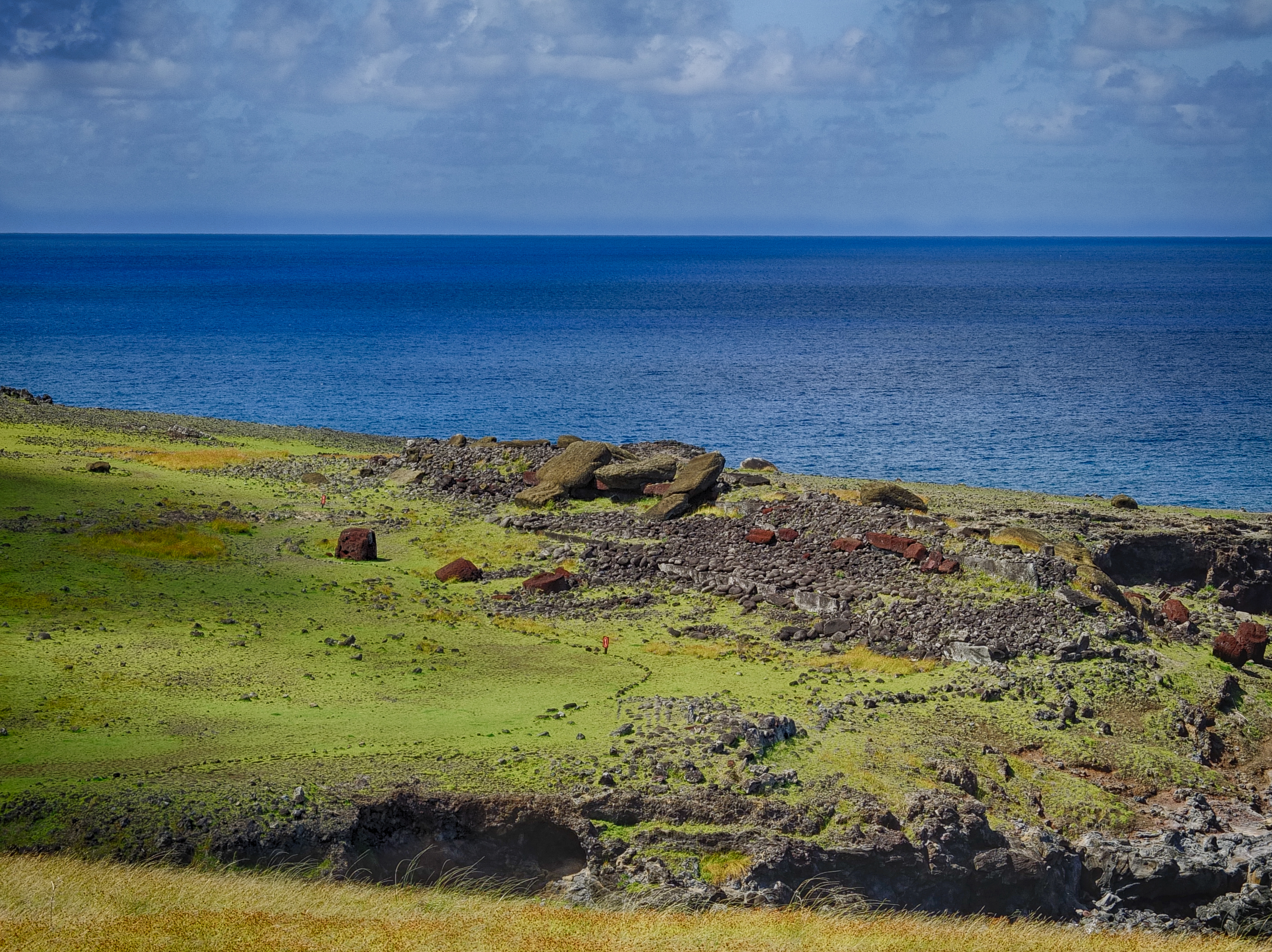
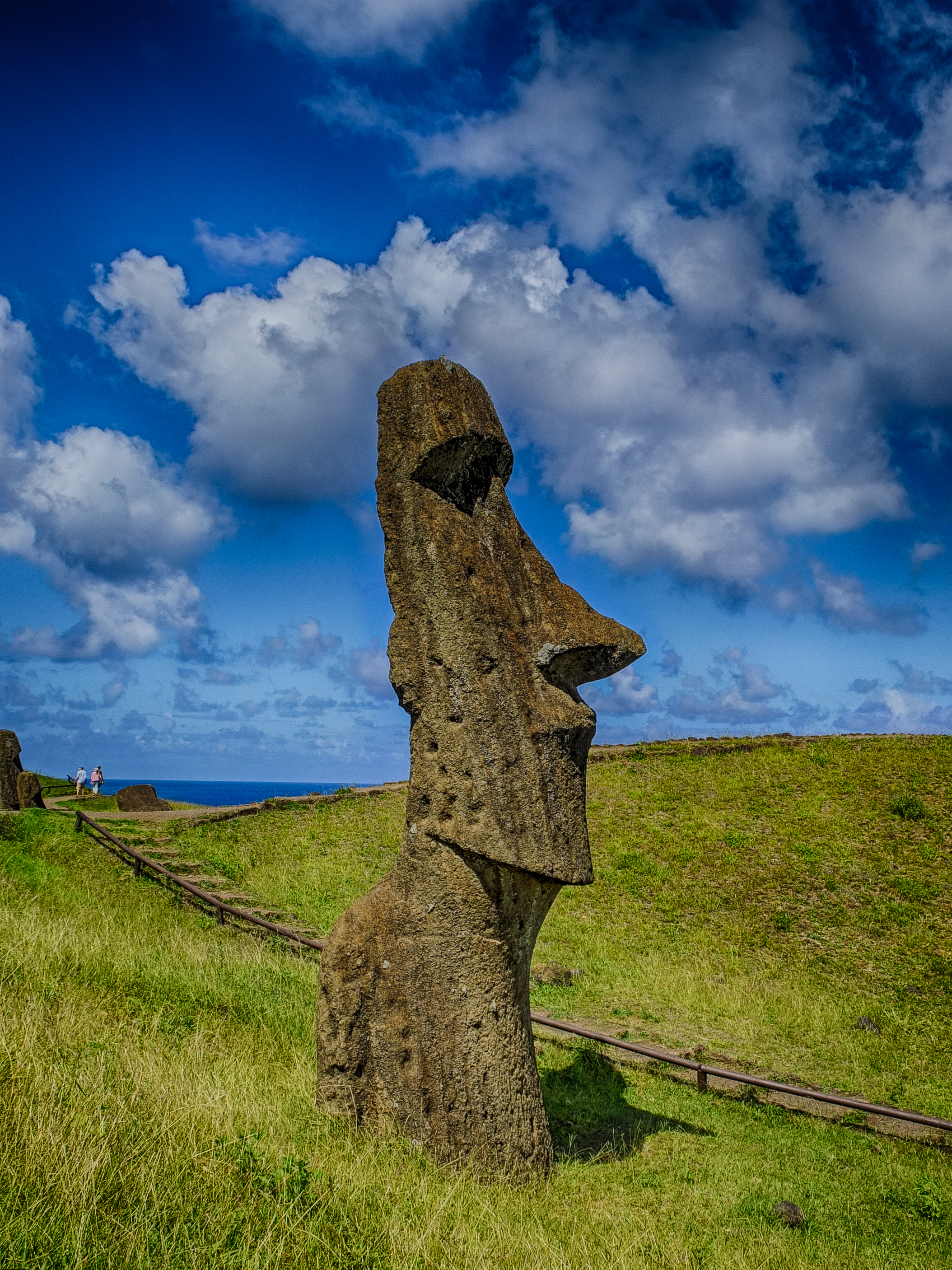
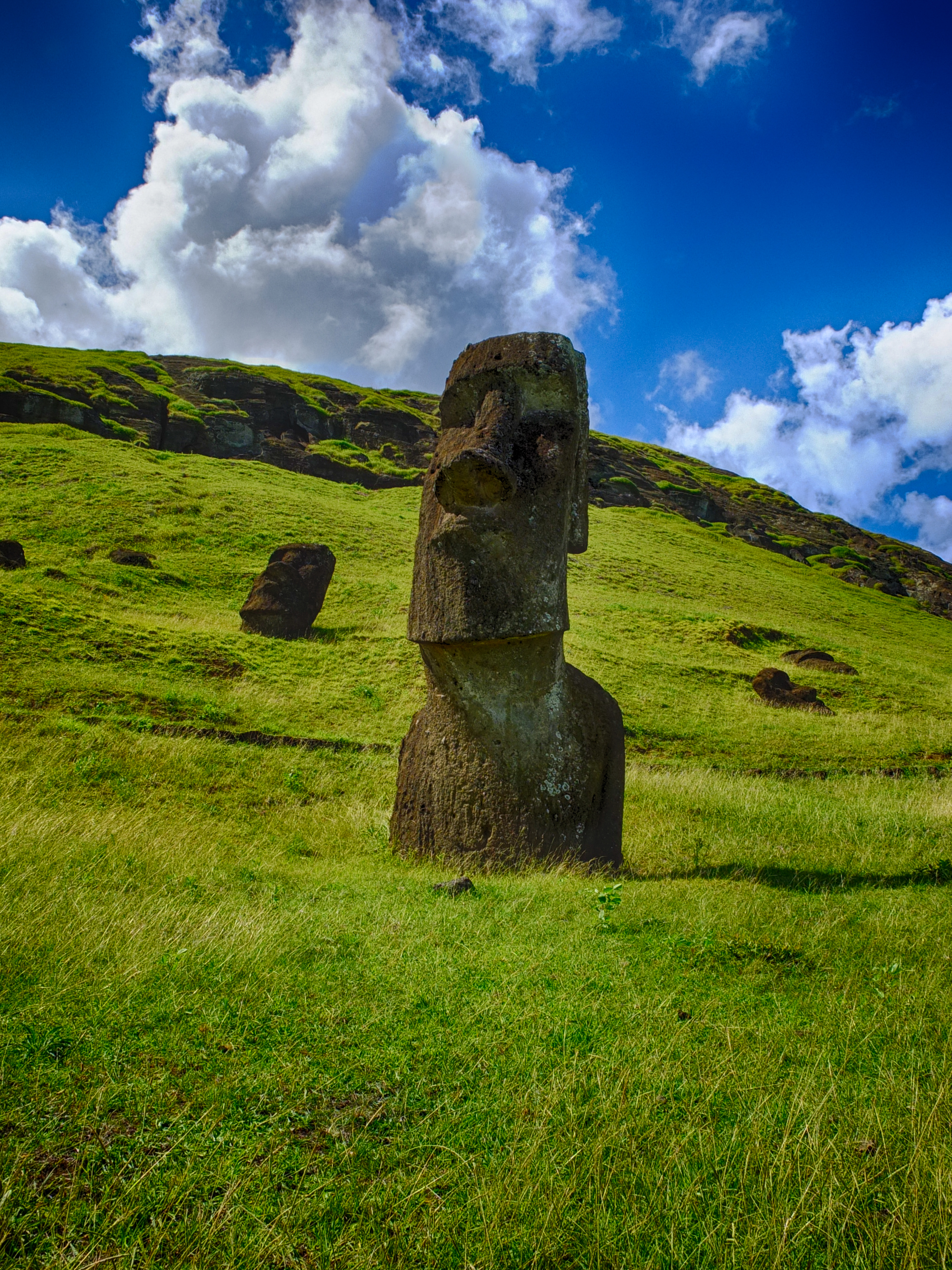
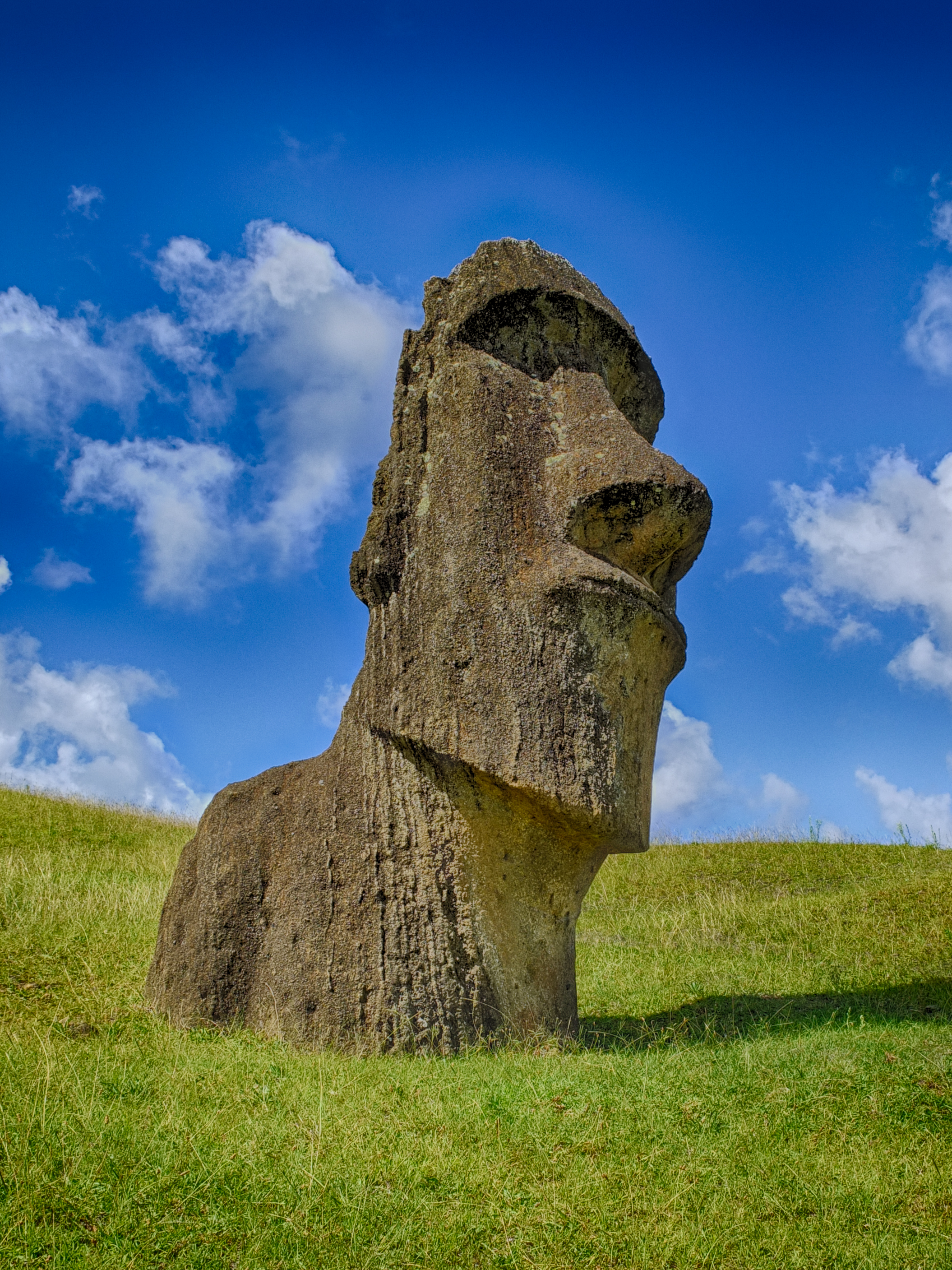
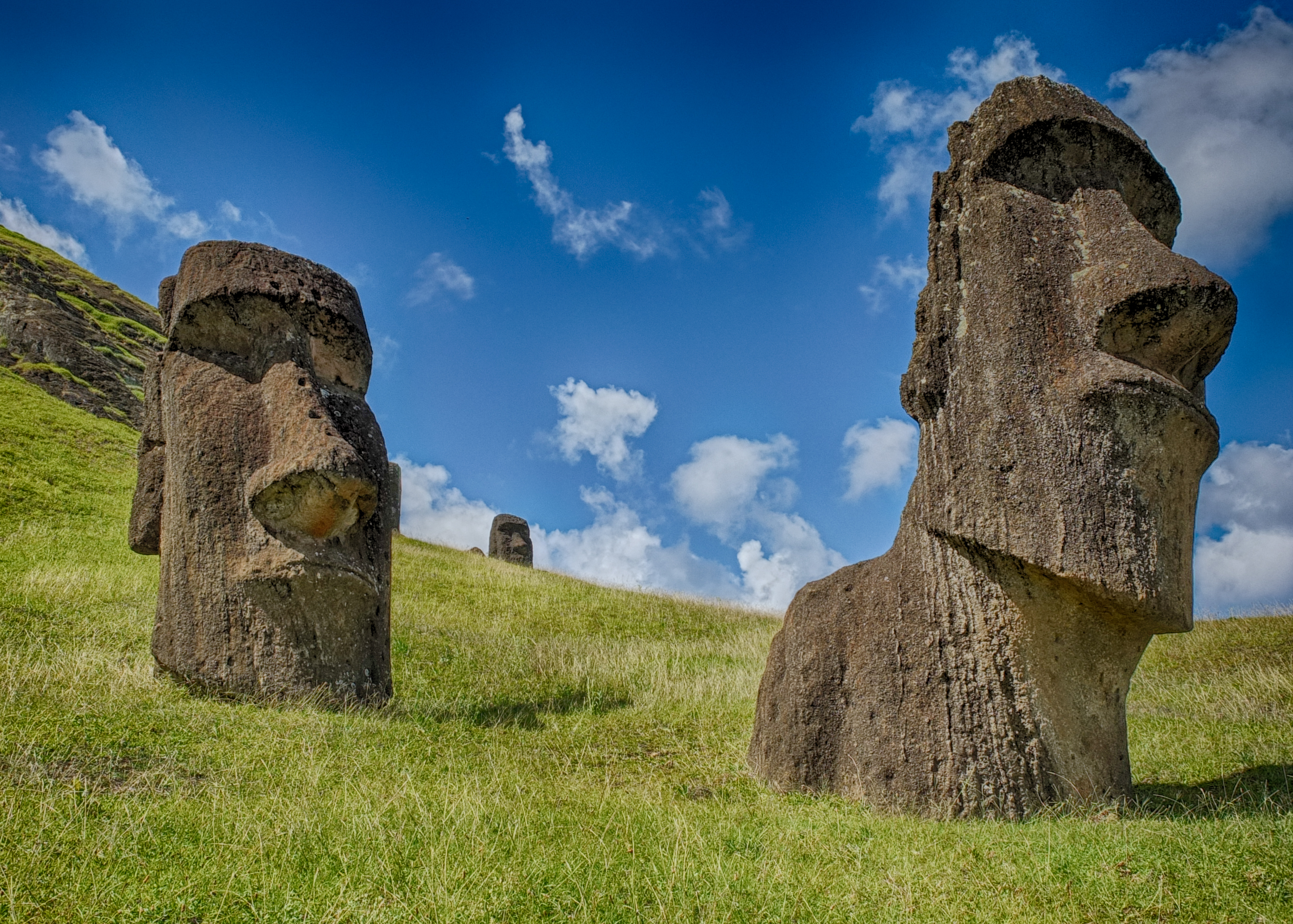
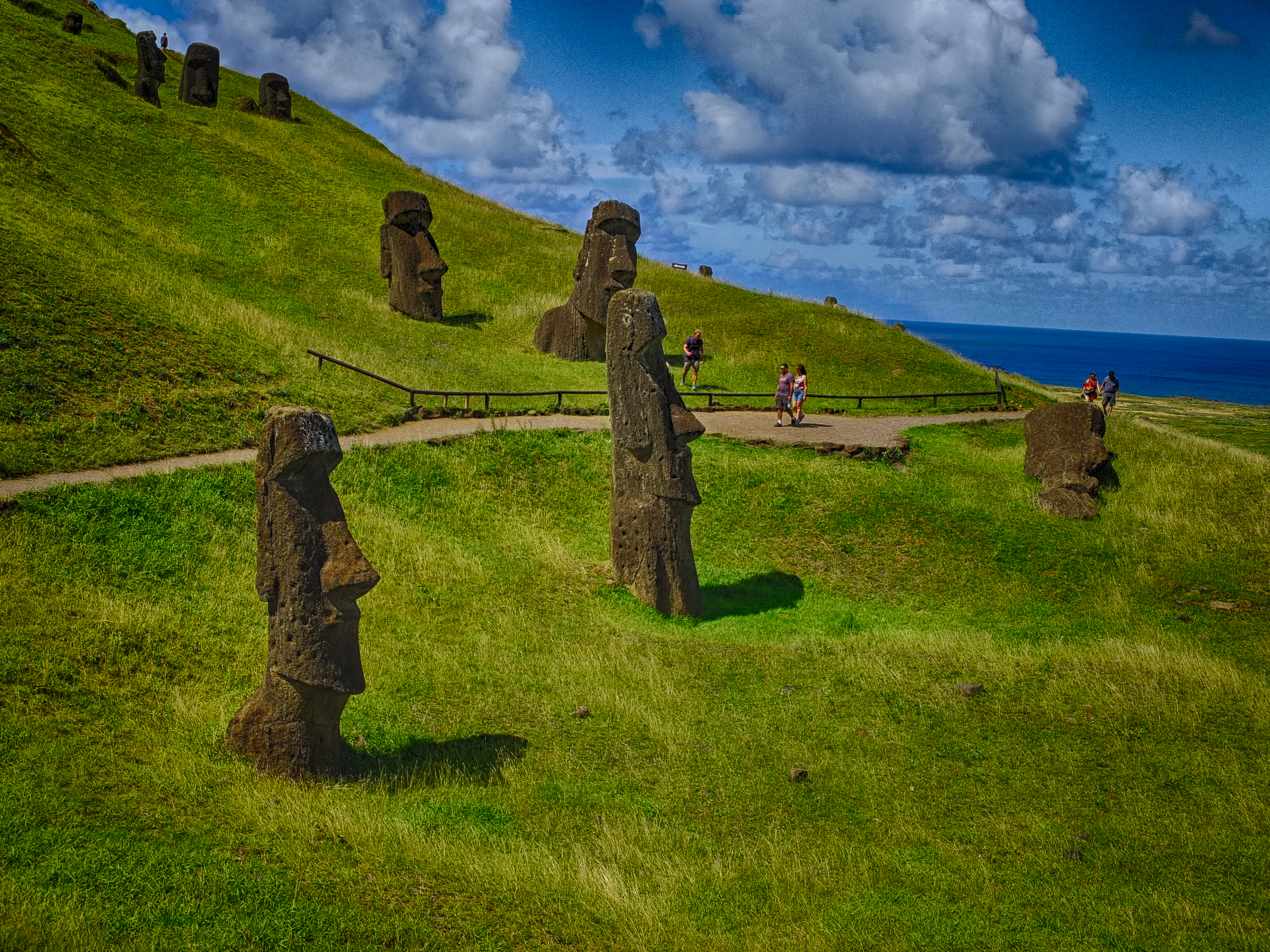
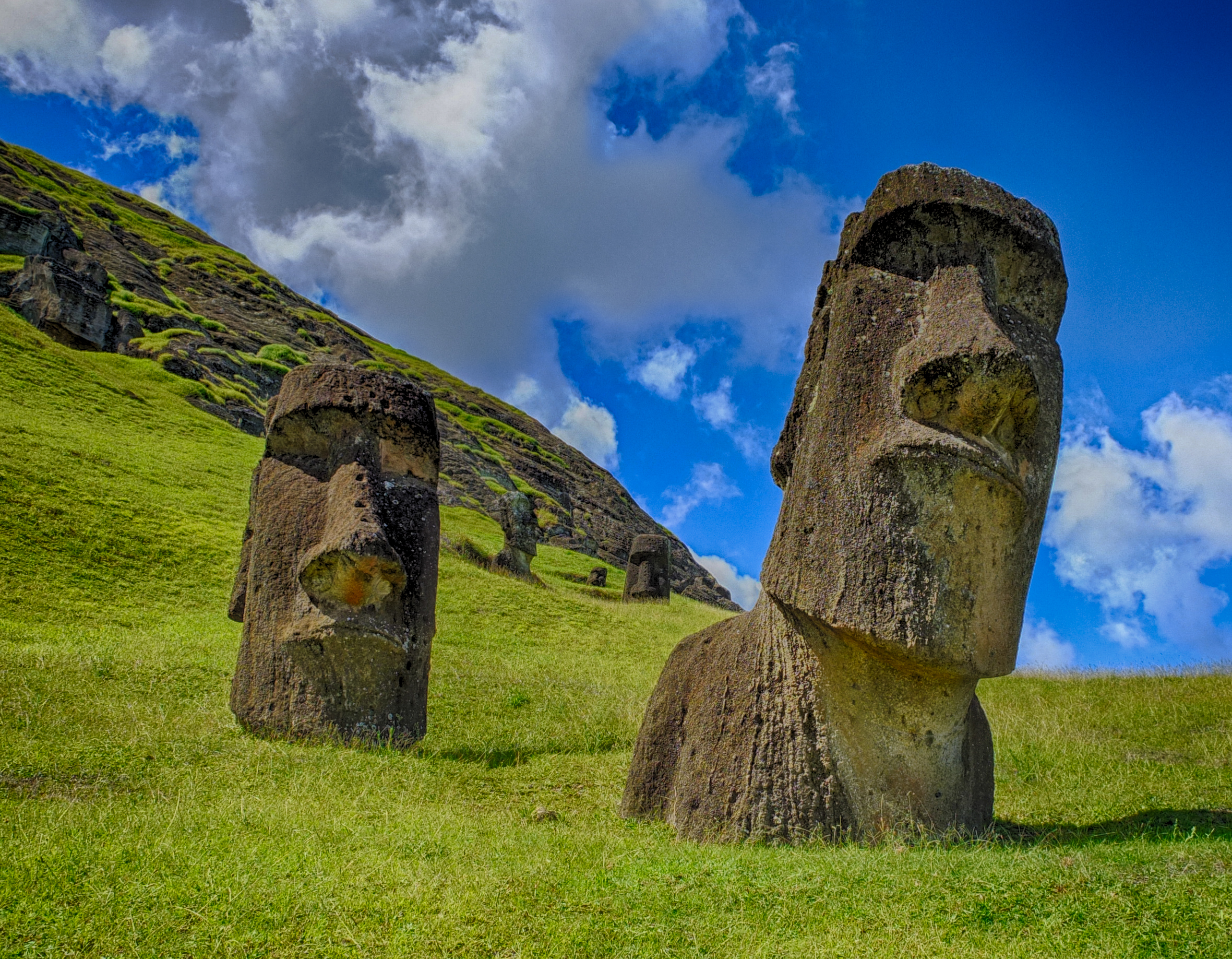
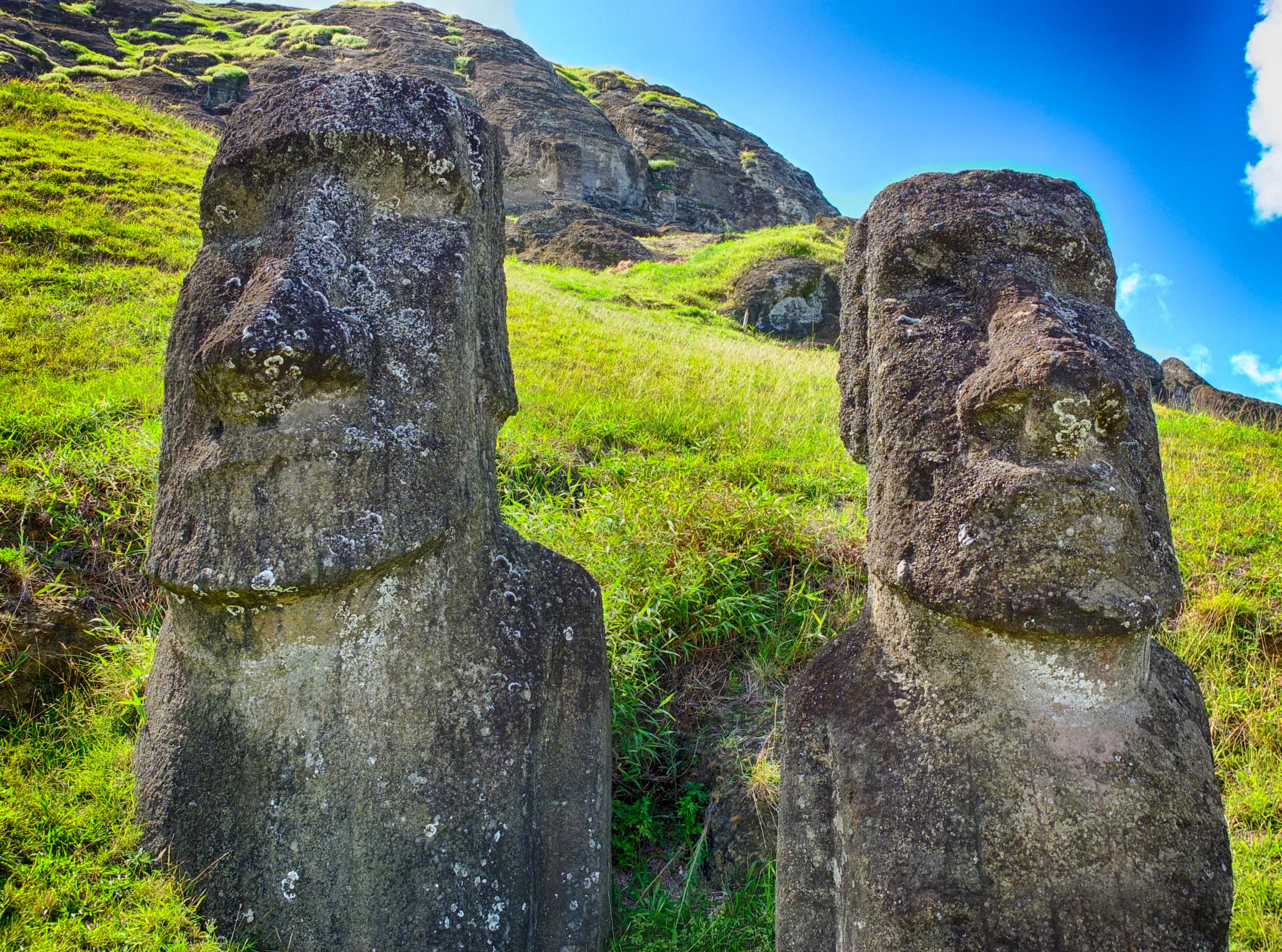

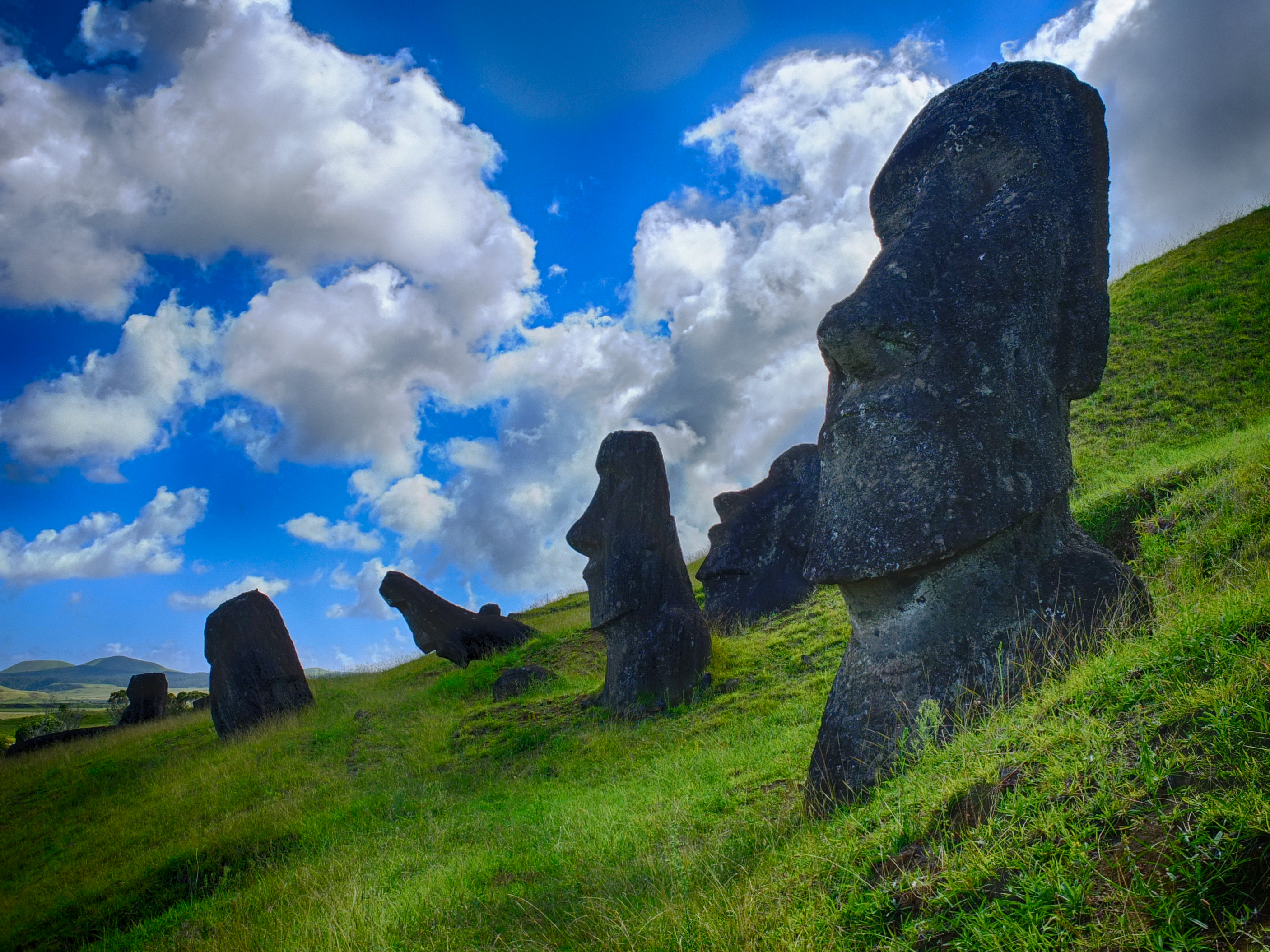

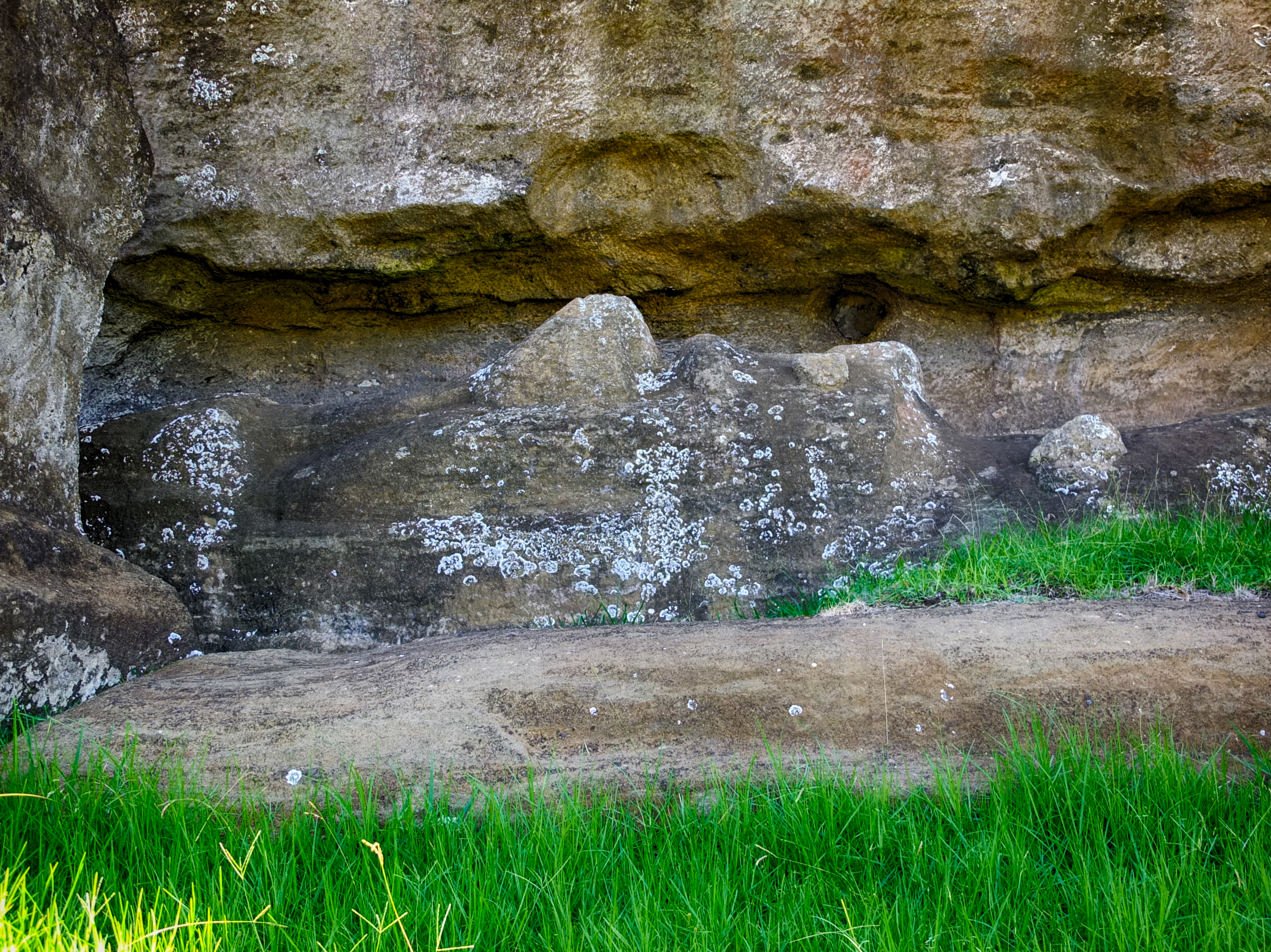
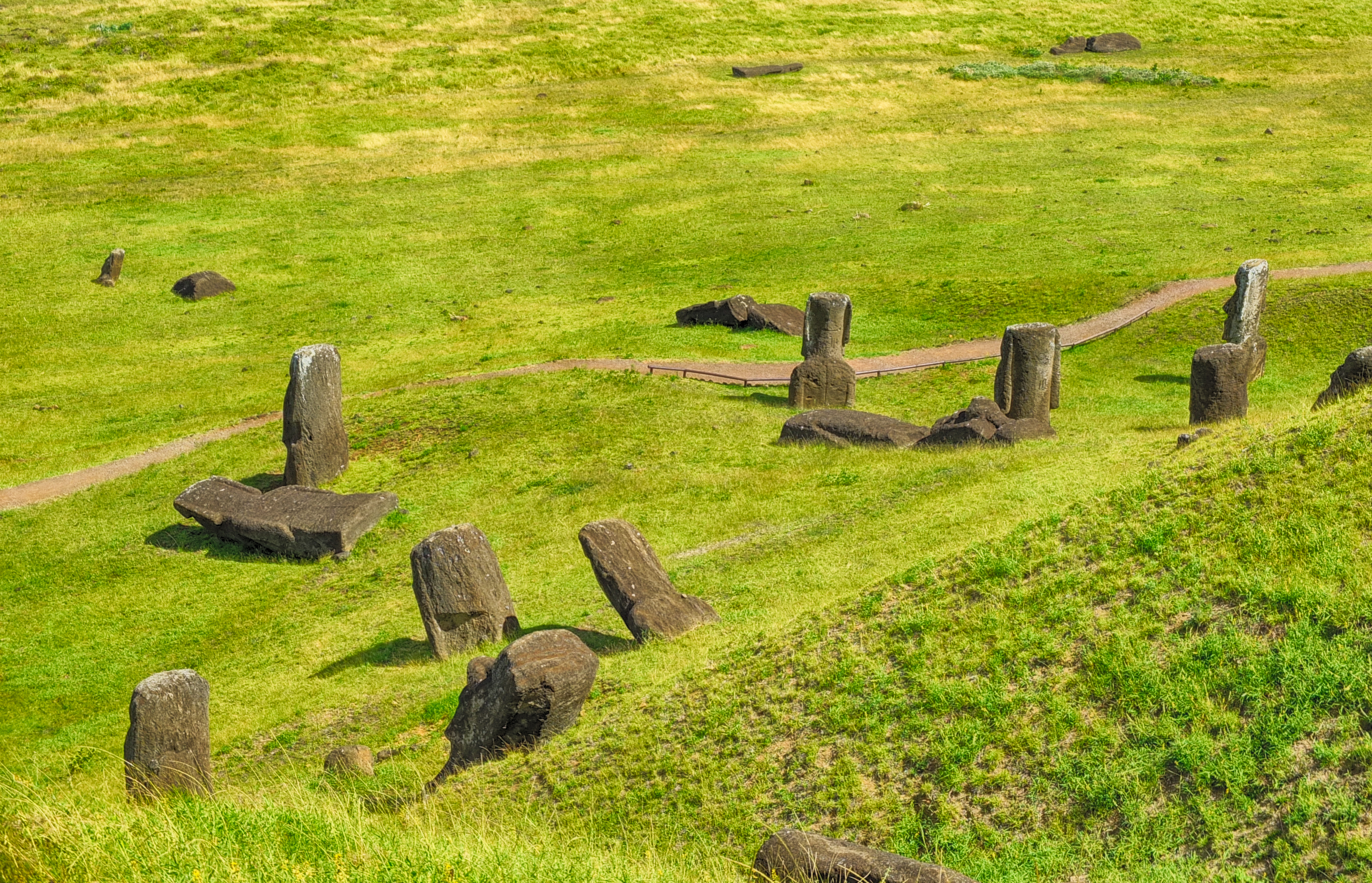


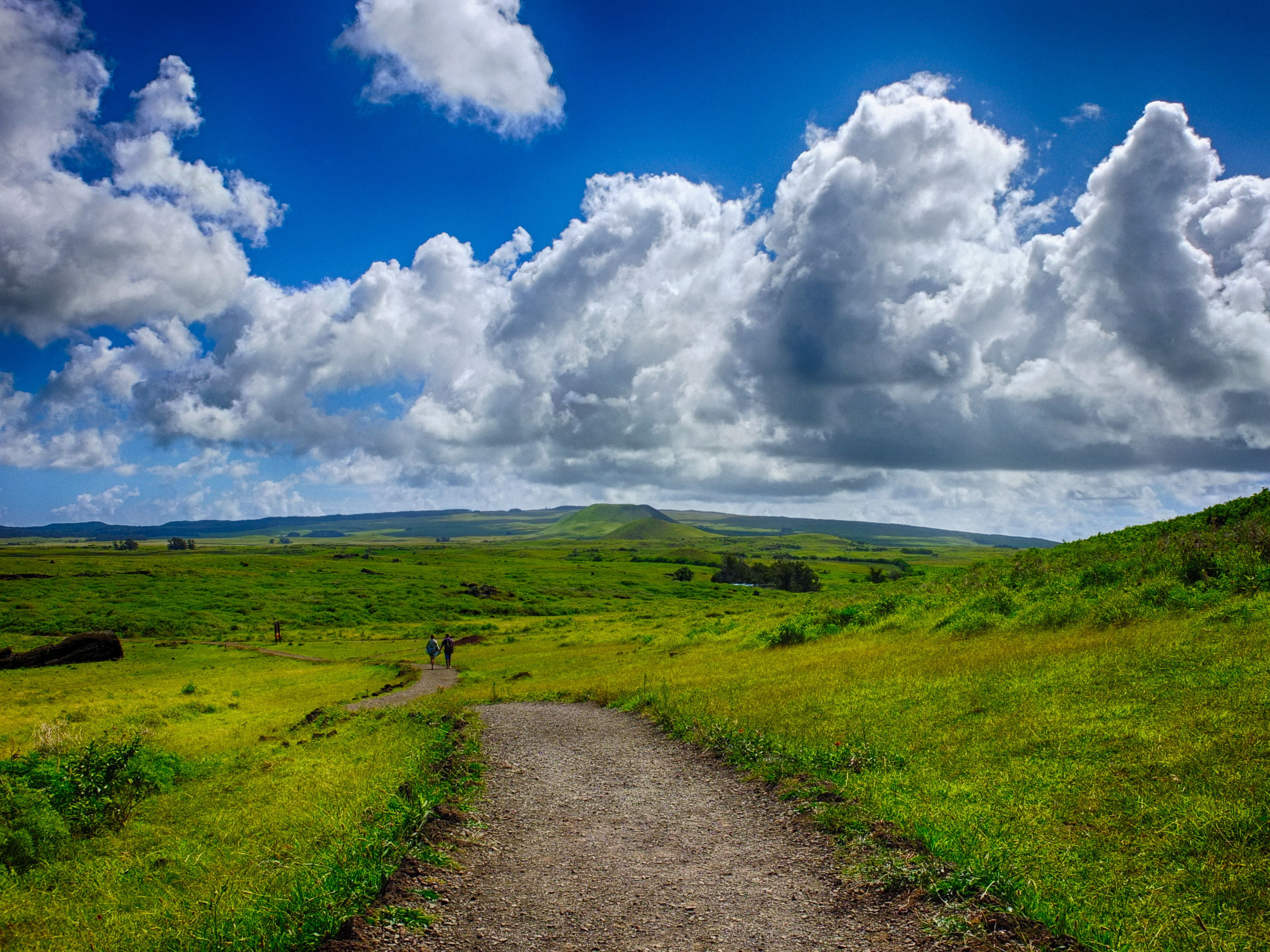



No handstand picture? And you call yourself a Crossfitter…
Wow, what great photos! My apologies if you’ve been asked this 50x before, but what did you use to shoot those?
Hi Irene, I use a Fuji X10 and edit in Lightroom 4 with the Google Nik plug-ins.
Awesome, thanks! I just finished reading part III and saw that you answered my question there. D’oh!
Great trip report! I’ve never considered Easter Island as a destination, but it’s definitely on my list now!
Wow, fantastic colors! What camera did you use?
Thanks for a fantastic trip report, it was a great read with lots of tips. Here is another very informative site:
https://easterislandtraveling.com/
It seems like you saw a lot of the island during your stay! Was there something you didn’t do, that you would have done in a 2nd visit? Thanks!
Hi Andy.
Very in depth article thank you. Amazing detail in the the photos. You mention staying in a Villa “spartantly appointed” I am planning on bringing my children. Seems like it might be tight for the 4 of us. Was there any other options for lodging? This article mentions guest houses and hotels. https://www.hotelsnearme.co/content/guide-visiting-easter-island-chile?amp
Any feedback on other lodging options? ie lodging that might be more suitable for energetic children.
Thank you in advance
Jenn
Hi Jenn, lots of options in Easter Island, many of them you can find online but there are also people in the Arrivals Hall who have rooms to lend.
Yeah, a fascinating corner of the world… a dark history though. Thanks for the photos.